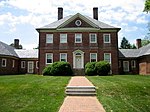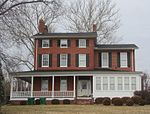Montpelier, Maryland
Montpelier, Prince George's County, Maryland, United States, (ZIP Codes 20708, 20709) is a suburban community outside the corporate boundaries of Laurel. Located near the Baltimore–Washington Parkway, it was built in the 1960s and early 1970s by Levitt & Sons. There are four models of houses in the Levitt style, with mirror images giving eight different floor plans. The Montpelier area has a history dating back to 1685, when it was part of a land grant given to Richard Snowden, Sr. by Lord Baltimore. Richard Snowden arrived in Maryland as an indentured servant and eventually became one of the largest landowners. The Snowden family built and lived in the Montpelier Mansion which remains a symbol of their success, financially and socially. The Montpelier community is a Planned Unit Development (PUD) and as such it has registered covenants and restrictions as set forth in Governing Documents dated January 1998. The purpose of these covenants is to provide a structured means of maintaining standards.
Excerpt from the Wikipedia article Montpelier, Maryland (License: CC BY-SA 3.0, Authors).Montpelier, Maryland
Cedarbrook Lane,
Geographical coordinates (GPS) Address Nearby Places Show on map
Geographical coordinates (GPS)
| Latitude | Longitude |
|---|---|
| N 39.0615 ° | E -76.85081 ° |
Address
Cedarbrook Lane 12411
20708
Maryland, United States
Open on Google Maps








